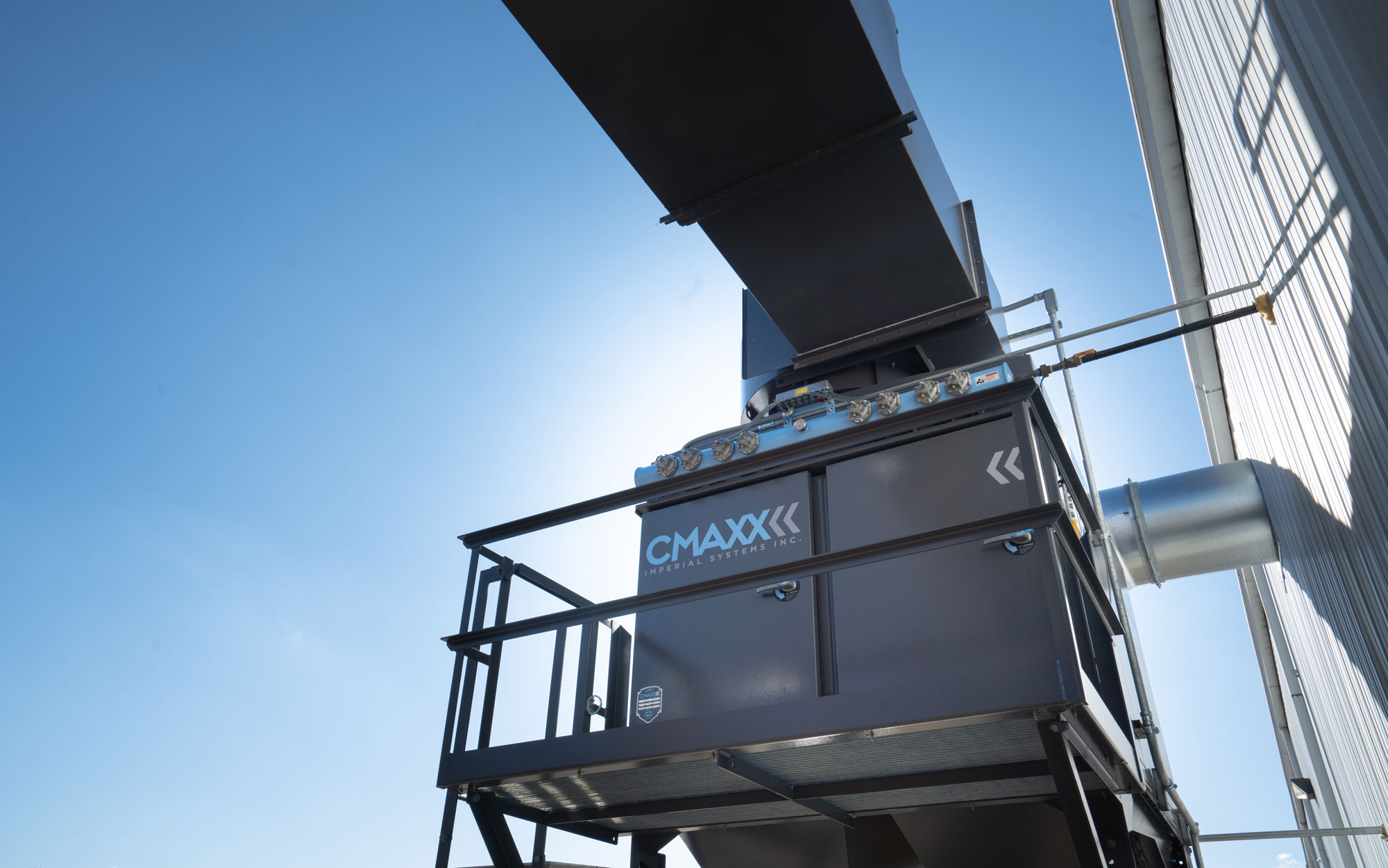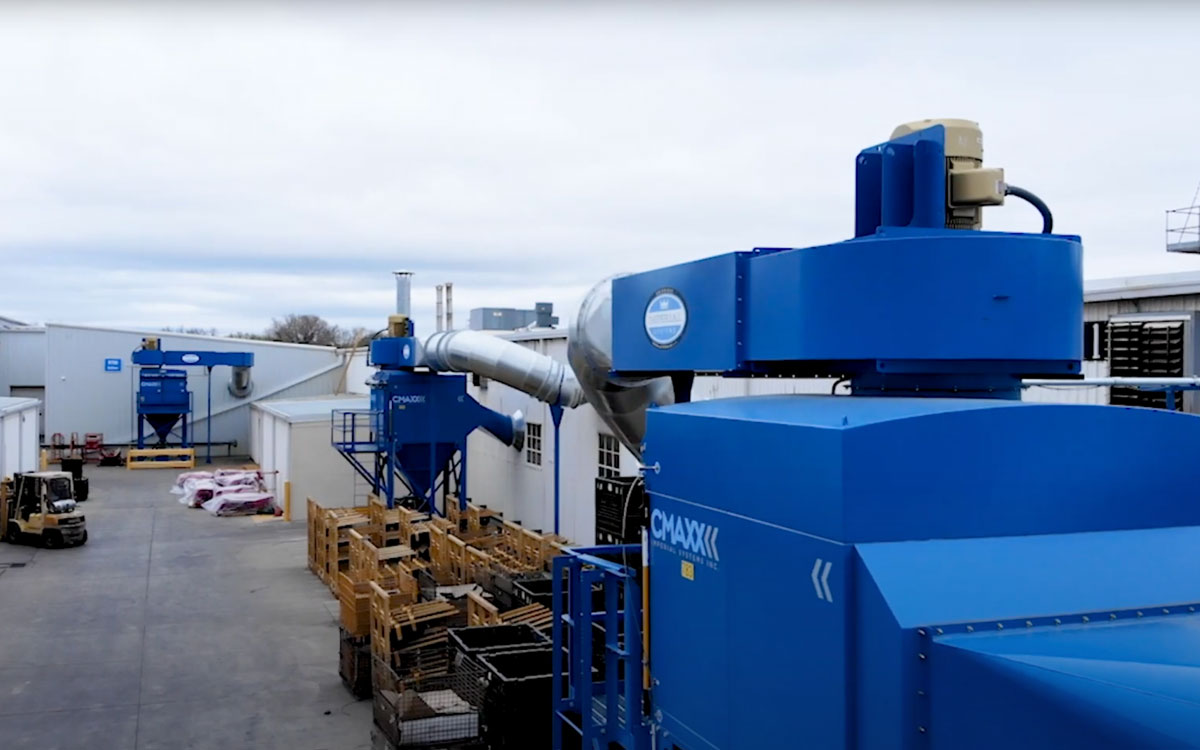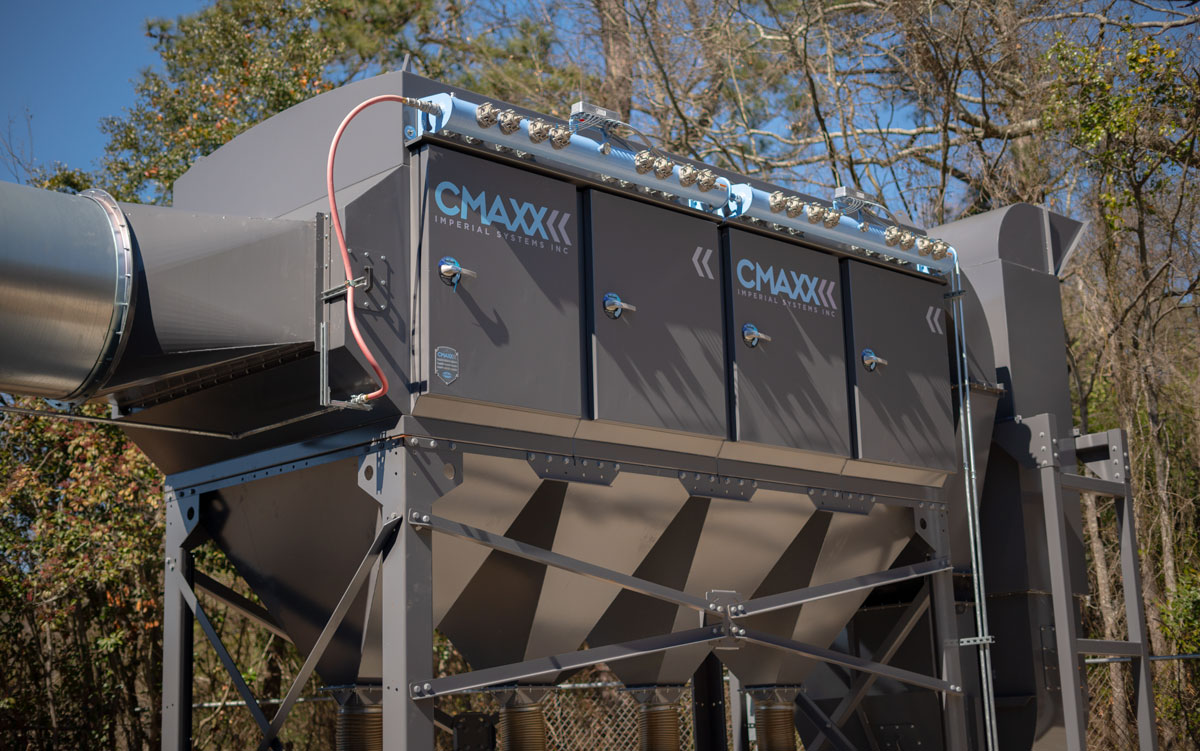As with most industrial manufacturing processes, metalworking generates dust that you must deal with. But metal dust can have unique properties which make it especially dangerous. Metal fires in dust collectors are not unusual and can certainly explode. Let’s discuss why metal fires start as well as what you can and must do for fire safety in metalworking environments. Then we’ll cover what to do (and not do) in a real metal fire emergency.
Flammable Metals in the Workplace
Fires with burning metal are categorized as Class D fires. To begin with, all of the alkaline metals in their solid state will burn easily, even spontaneously combust at low temperatures. Some examples are sodium, lithium, rubidium, and potassium. Then there are a few other metals like titanium and magnesium which in solid form ignite only under extreme heat. But once ignited, they can quickly and easily spread into a very dangerous and destructive fire.
The most common industrially used metals in Class D metal fires are aluminum, magnesium, and titanium. Therefore, these metals in dust form are extremely hazardous in dust collection systems. However, most metals in a fine dust form can ignite and produce dangerous situations in confined dust collector systems. The finer the dust, the more likely it is to burn.
Common Metal Fire Causes
Most Class D metal fires occur from processes that create metal dust like cutting, drilling, and grinding. These can produce metal dust fine enough for combustion. As mentioned, a common metal used in manufacturing is aluminum. In its solid form, or even as larger chips created by manufacturing processes, aluminum can remain inert. But finer aluminum dust can be highly explosive when exposed to oxygen and an ignition source.
Metal dust collection should never be mixed with other materials or dissimilar metals. For example, metal dust should never be combined with a wood dust application. A simple spark can easily ignite wood dust, causing a potentially dangerous metal dust explosion.
Aluminum dust should never be combined with a ferrous metal dust system. Machining of ferrous metals can create sparks resulting in a metal dust explosion. Ferrous metal dust (iron) can quickly oxidize. It will create sufficient heat to spontaneously combust. Aluminum dust can also react with water to form highly flammable and explosive hydrogen gas.
Fire Safety Starting Point
When setting up a metalworking operation in your plant, you’ll need an evaluation assessment. Make the first call to your insurance company as they want to make sure that the plant is safe. They usually require that a third party come to your facility to perform an evaluation. The National Fire Protection Association (NFPA) now requires a risk analysis.
They’ll identify the minimum requirements and develop a plan to meet them. In their report, they’ll tell you what issues to address and what steps to take to resolve them. This will include everything from equipment requirements to employee safety training.
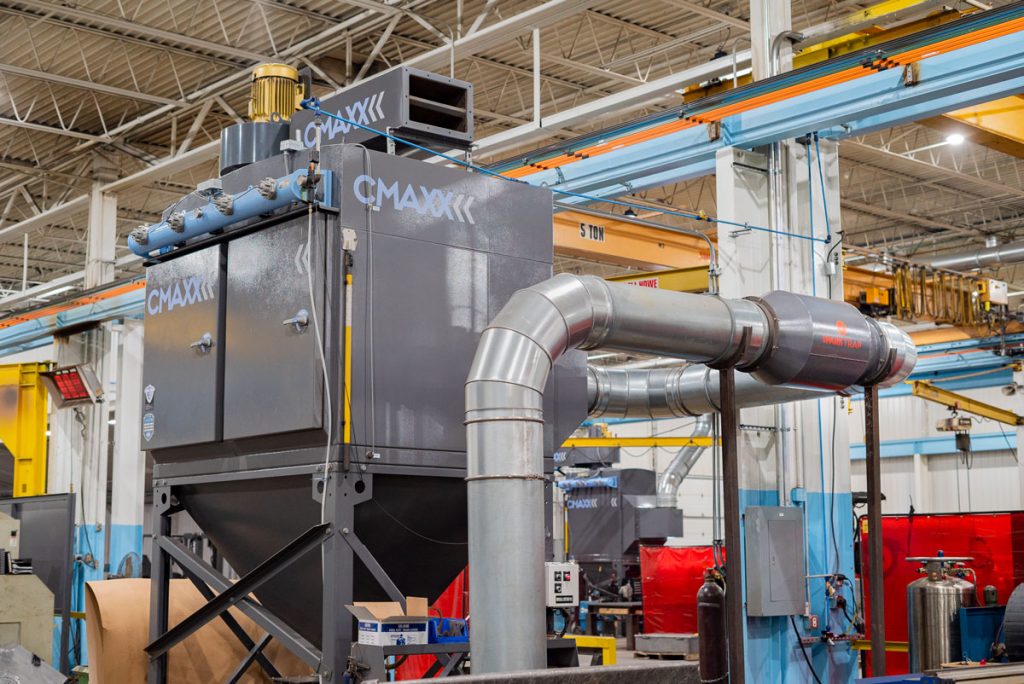 Dust Collection System Design for Fire Safety
Dust Collection System Design for Fire Safety
There are important considerations in selecting and configuring a dust collector for a metalworking application to ensure fire safety. But before we can start looking at any equipment or options, we need to collect some data.
Dust Sample Analysis
The dust collector supplier needs a good, representative sample of what will go through the dust collector. That’s for analysis to determine how flammable it is and what the Kst value is. The higher the Kst, the more explosive it is. Metal dust types with high Kst values are very volatile and very dangerous. With this report and information about the challenges of the application from the customer, the dust collection system design can begin.
AHJ Collaboration
AHJ stands for authority having jurisdiction. You will need an AHJ to approve the dust collection system you’re submitting for installation. The NFPA defines an AHJ as an organization, office, or individual responsible for enforcing the requirements of a code or standard, or for approving equipment, materials, an installation, or a procedure. This could be a fire chief, your insurance company, somebody with the NFPA, or someone else. Again, call your insurance company first.
The AHJ will review the dust collection system that you intend to install for the application. They’ll tell you if anything needs to change in order for it to be approved. In addition to the dust collector, there may be other requirements they’ll bring up like special fire extinguishers.
Fire and Explosion Protection Components
The AHJ may require installing a dry chemical system to extinguish a fire inside the dust collector. A chemical system recognizes a rise in temperature or a rise in pressure. It has fast-acting dampers on the inlet and outlet that isolate the fire. Then it immediately floods the collector with a chemical suppressive that smothers the flames. The chemical system contains the fire and keeps the dust collector from exploding. It does this by taking the oxygen away and absorbing the heat. The collector cannot have a typical water system in it. Water can cause further reaction to metal dust. It can act as an accelerant and add more fuel to the fire.
If the dust collector doesn’t have a chemical system and has explosion vents, the vents will blow out with a ball of flames. It’s going to burn the collector and potentially anything nearby. Therefore, isolation is the best thing you can do for a metal fire. Imperial offers another, NFPA conforming option to isolate a deflagration and stop a flame front. It’s the CMAXX with the proprietary IDA (In-Line Deflagration Arrester) DeltaMAXX filters. There are other combustible dust and fire accessory components as well. Spark traps, explosion-tested drum kits, and flameless explosion vents are a few.
Best Prevention Practices for Metal Fire Safety
Here are ways you can avoid metal fires in your plant. So far we’ve discussed potential fires inside your dust collector because that’s where you’re most likely to have one. But metal fires are also possible in metal processing areas throughout a facility. You should develop safety procedures and follow them when performing any manufacturing process on metals (cutting, grinding, drilling, etc.).
Segregate the Metals
All combustible metals should be separated and stored in secure locations or containers. This is especially important for metals that combust at low temperatures. More so, it’s critical with highly reactive metals like sodium, which burns on contact with air or water.
Metal dust should never be combined with anything else in the dust collection system. Earlier we talked about the hazards of collecting metal and wood dust together. If you have aluminum machining, that’s all you should be pulling into the collector. Nothing else should be going in there. Do not combine metal dust with anything else. Even aluminum and steel should not be mixed.
Yes, that means a separate, dedicated dust collector for one type of metal dust. This is a hard truth to hear because naturally, you don’t want to pay for two systems. Even aluminum chips will catch fire down at a certain size. The finer metal dust gets, the more it’s susceptible to burning.
Keep Up Good Housekeeping
Clean up work areas and do not allow metal dust to accumulate on any surfaces. That includes the floors. If you’re running a machining process that’s creating dust, it’s going to build up. That includes the rafters. This is especially important because you typically don’t see the dust piles up there.
The danger is in the accumulation, which can be the source of a secondary fire or explosion, ignited by the first one. Good housekeeping practices should be routinely performed.
Periodic Fire Safety Evaluations
This is the very best way to prevent a fire from happening. Have a qualified company come into your plant and perform a full risk assessment at regular intervals. They’ll advise you of any problem areas that you need to address. This is an NFPA code requirement of every commercial manufacturing property. Its purpose is to identify and eradicate potential fire hazards in the workplace. Insurance companies usually enforce these periodic evaluations.
Dealing with a Metal Fire Emergency
Despite your diligence and prep work to prevent a metal fire, it’s still always possible that you may have one. An ember or spark can find its way onto a flammable metal dust pile if good housekeeping isn’t maintained. It could also find its way into the dust collector if a spark trap isn’t installed. You would be surprised how easily an ignition source can inadvertently occur at an inlet suction point. Besides obvious employee evacuation, what should you do in the event of an actual metal fire at your plant?
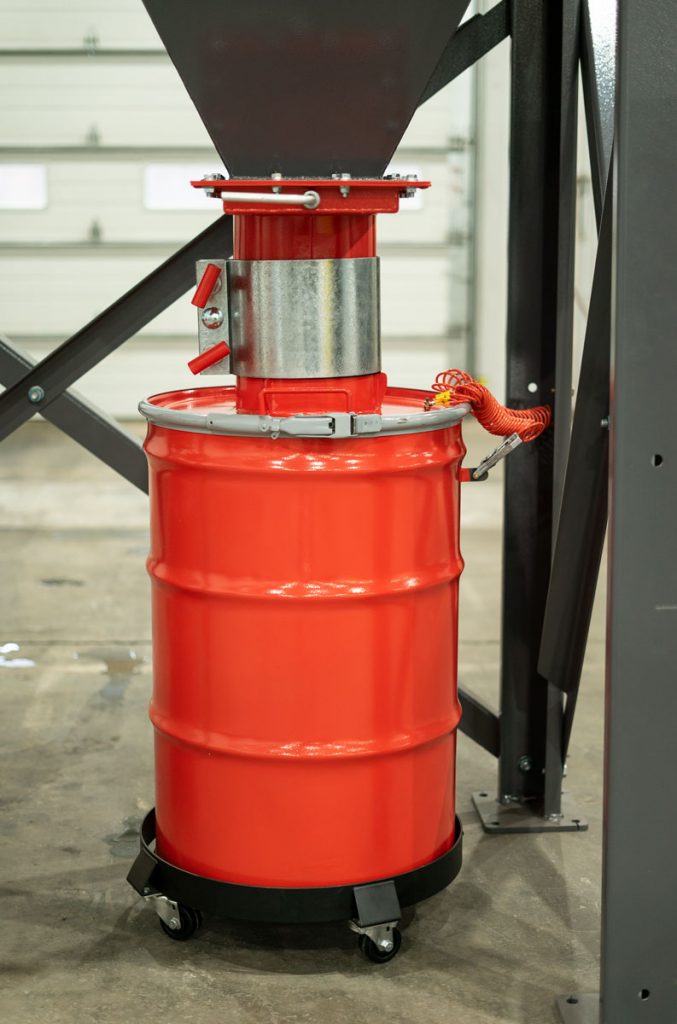 Use Extinguishers Specifically for Metal Fires
Use Extinguishers Specifically for Metal Fires
We learned earlier that metal fires are classified as Class D fires. These are extremely dangerous because most people do not know how to properly fight them. Typically, the first thing people want to do is throw water on a fire or use a regular extinguisher. However, that’s the worst thing you can do for a metal fire. It just fuels the flames. If there’s a pile of metal dust on the ground that’s burning, water is not going to put it out. It’s just going to wash that flame into different areas of the plant.
So, you really need a dry chemical type extinguisher that is specifically designed for Class D fires. This smothers the fire and the oxygen fueling it. It also absorbs heat within the fire, leading to its extinguishment and reducing the chance of the fire spreading to other areas. Have Class D-rated extinguishers ready for use and train your employees on when and how to use them.
Leave a Burning Dust Collector Alone
More than likely, if you have a metal fire it will start in your dust collector. You or your employees may be tempted to try and extinguish it. Stay away from it. Here’s why.
- If the collector has a chemical suppression system installed on it, that will isolate and extinguish the fire as explained earlier. This is the best scenario. Let the chemical system do its job. Do not open the doors to try and extinguish the fire yourself or check it afterward. We know now that oxygen will fuel any metal dust flames, so don’t open the doors. Leave it alone and call the fire department.
- We’ve already discussed a collector that does not have a chemical suppression system but does have common explosion venting. The temperature and pressure will build up, eventually blowing out the vents. A ball of flames will be released. With properly sized explosion venting the collector likely won’t burst apart from the explosion, but it will continue to burn. In any case, you don’t want to be near it when that happens. Leave it alone and call the fire department.
- The worst-case scenario is if your collector doesn’t have a chemical suppression system or explosion venting. It’s going to explode and burst apart from the rise in heat and pressure. Essentially, it is a bomb. Don’t approach it or try to relieve the growing pressure by opening the doors. Leave it alone. Evacuate according to plan. Call the fire department.
Keep Fire Safety a Priority
Avoiding metal dust fires has special challenges. Determining the danger potential of your specific metalworking application takes effort. So does cooperation and compliance with authorities. It’s a tough decision to buy an additional, dedicated dust collector just for metal dust. After all, dust collectors don’t contribute to your production output. Plus, over time it’s easy to become neglectful of good housekeeping, recurring safety training, and periodic inspections. Decide to keep your employees safe and your plant running with proper preparation and procedures for metal fire safety.
